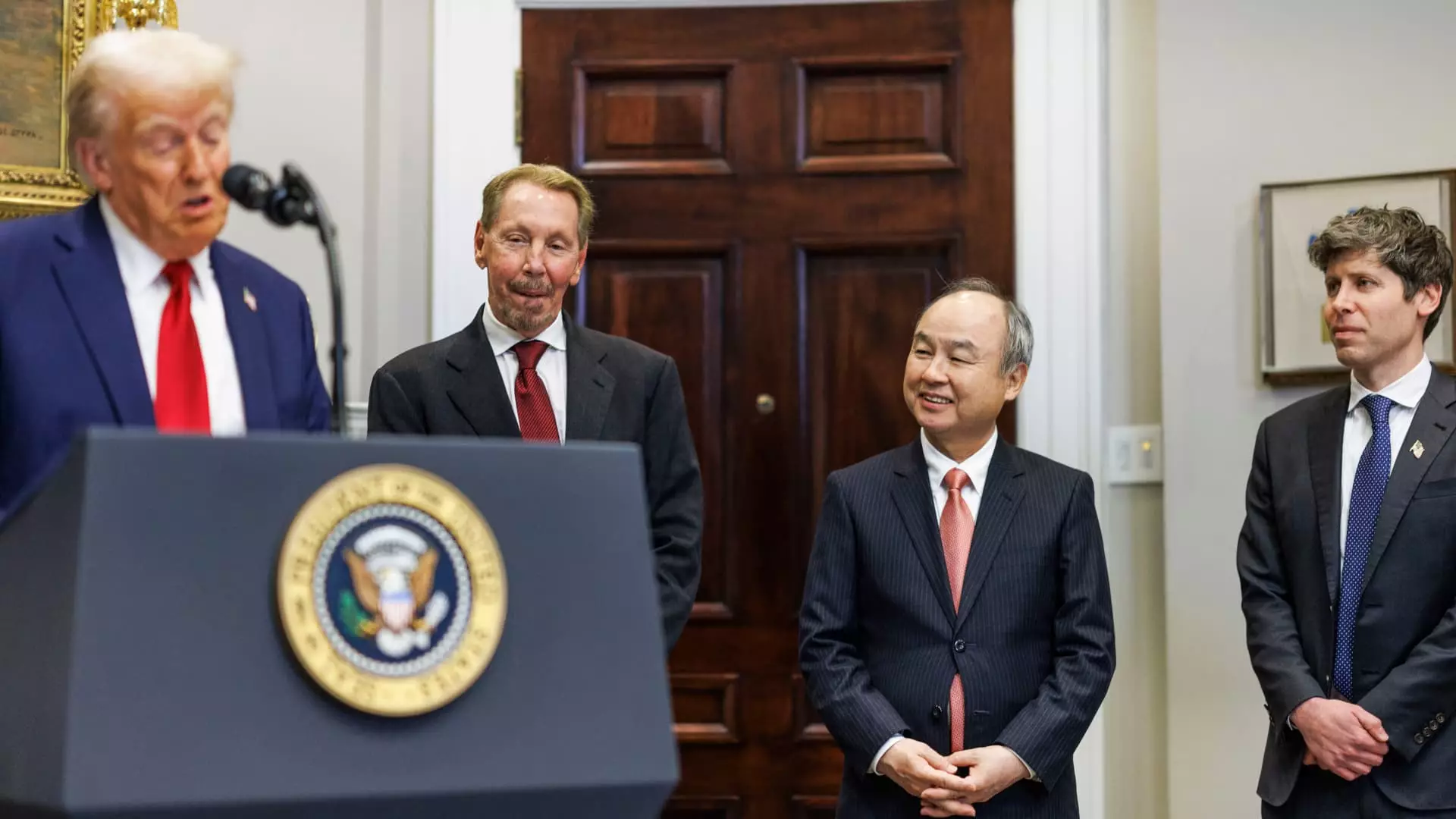As the artificial intelligence (AI) sector becomes increasingly competitive, significant changes are emerging in the partnerships between key players. Microsoft, once the primary cloud provider for OpenAI, is experiencing a shift in its relationship with the organization that could reshape the dynamics in AI development and deployment. While Microsoft retains significant influence over OpenAI’s operations, recent announcements signal a diversification of cloud providers that could affect future collaboration and innovation.
In a pivotal blog post, Microsoft acknowledged a transformation in its exclusive cloud provision for OpenAI. The change comes amid a broader initiative backed by governmental and business leaders to invest heavily in AI infrastructure. Notably, the announcement coincided with the launch of the Stargate Project, a substantial joint venture involving Oracle, Softbank, and OpenAI, aimed at constructing extensive AI resources in the United States.
This shift highlights the increasingly pluralistic nature of cloud partnerships in the AI domain. Although Microsoft retains the “right of first refusal” for additional computing capacity that OpenAI might seek, the new arrangement indicates that OpenAI is actively pursuing relationships with other entities. This diversification could benefit OpenAI by enhancing its technical capabilities and fostering innovation through varied technological perspectives.
The Stargate Project, as highlighted by executives from the participating companies, aims to invest between $100 billion and $500 billion over four years in AI infrastructure. Such monumental financial commitments are indicative of the high stakes involved in AI development, where computational resources are as crucial as the algorithms themselves. With Oracle taking a prominent role alongside tech titans like Microsoft and Nvidia, the construction of data centers—including significant facilities in Texas—can be seen as a direct response to the skyrocketing demand for AI-related computational power.
Larry Ellison, Oracle’s Chairman, confirmed that numerous data centers are already underway, a move that underscores the urgency for efficient and powerful computing resources. The capacity for AI to learn, process, and adapt hinges greatly on the infrastructure that supports it. The introduction of diverse cloud partners not only strengthens the resource pool available to OpenAI but also introduces a competitive atmosphere that could foster rapid innovation.
Despite the growing ecosystem of cloud partnerships, Microsoft remains confident in its standing with OpenAI. The tech giant emphasizes its ongoing collaboration through significant commitments, particularly in the Azure cloud services. The partnership’s longevity and profitability hinge on Microsoft’s ability to navigate the evolving competitive landscape while still being a valuable resource to OpenAI.
Despite the assurances, the relationship has exhibited signs of tension. Microsoft’s CEO, Satya Nadella, recently described OpenAI’s ambitions as substantial—a reminder that the tech landscape is evolving and can bring unforeseen competition. This level of candidness from Microsoft’s leadership may reflect an understanding that, while they have been foundational to OpenAI, it is imperative to adapt to the dynamic nature of the industry.
The implications of this restructured partnership extend beyond immediate business interests; they serve as a bellwether for the future of AI technology and collaboration overall. As OpenAI diversifies its cloud dependencies, it may find new avenues for technological progress and innovation. This strategy could allow OpenAI to remain at the forefront of AI advancements while also cultivating a competitive spirit among cloud providers striving to outdo one another in speed, efficiency, and capabilities.
Moreover, the ongoing collaboration between AI firms and their respective cloud partners may redefine norms around exclusivity and competition in tech alliances. The collaboration requiring mutual adaption between companies ensures a more dynamic environment that could accelerate breakthroughs in AI and reshape industry understandings of intellectual property rights.
As Microsoft navigates this transition, the influence it exerts over OpenAI will still be significant, albeit amid a backdrop of increased competition and strategic diversification. The evolving partnership landscape reflects broader changes in the AI industry and a recognition that flexibility may be key to staying relevant and competitive. Whether this represents a simple shift in operational dynamics or the heralding of a new era in AI development remains to be seen, but it is clear that innovation will thrive in a more multifaceted environment.

